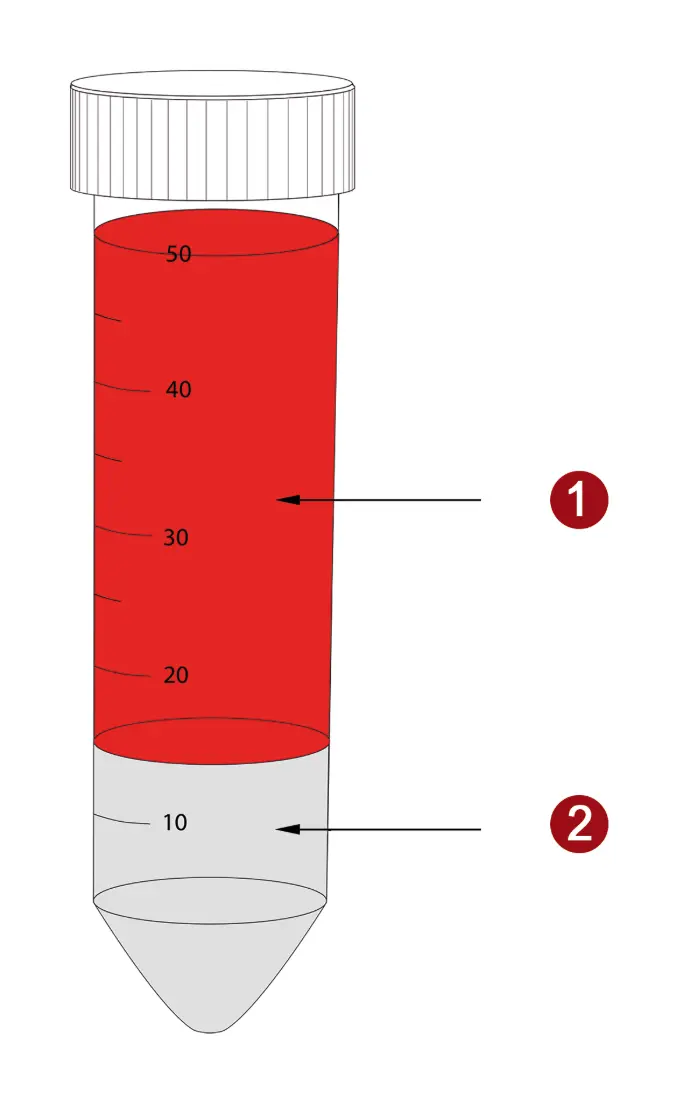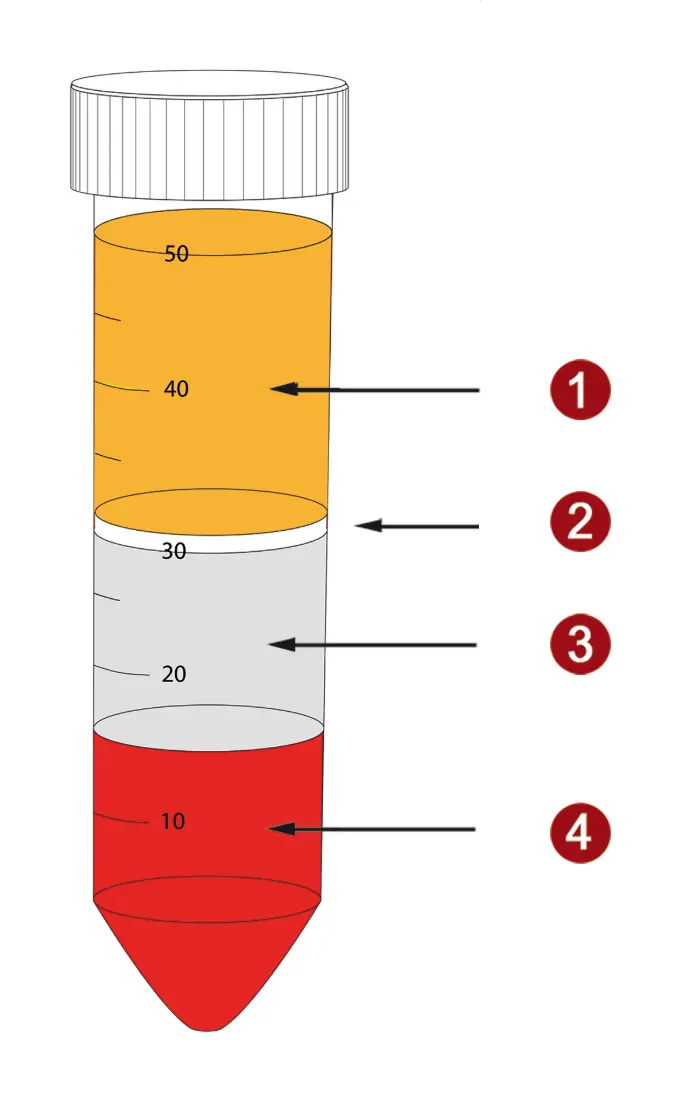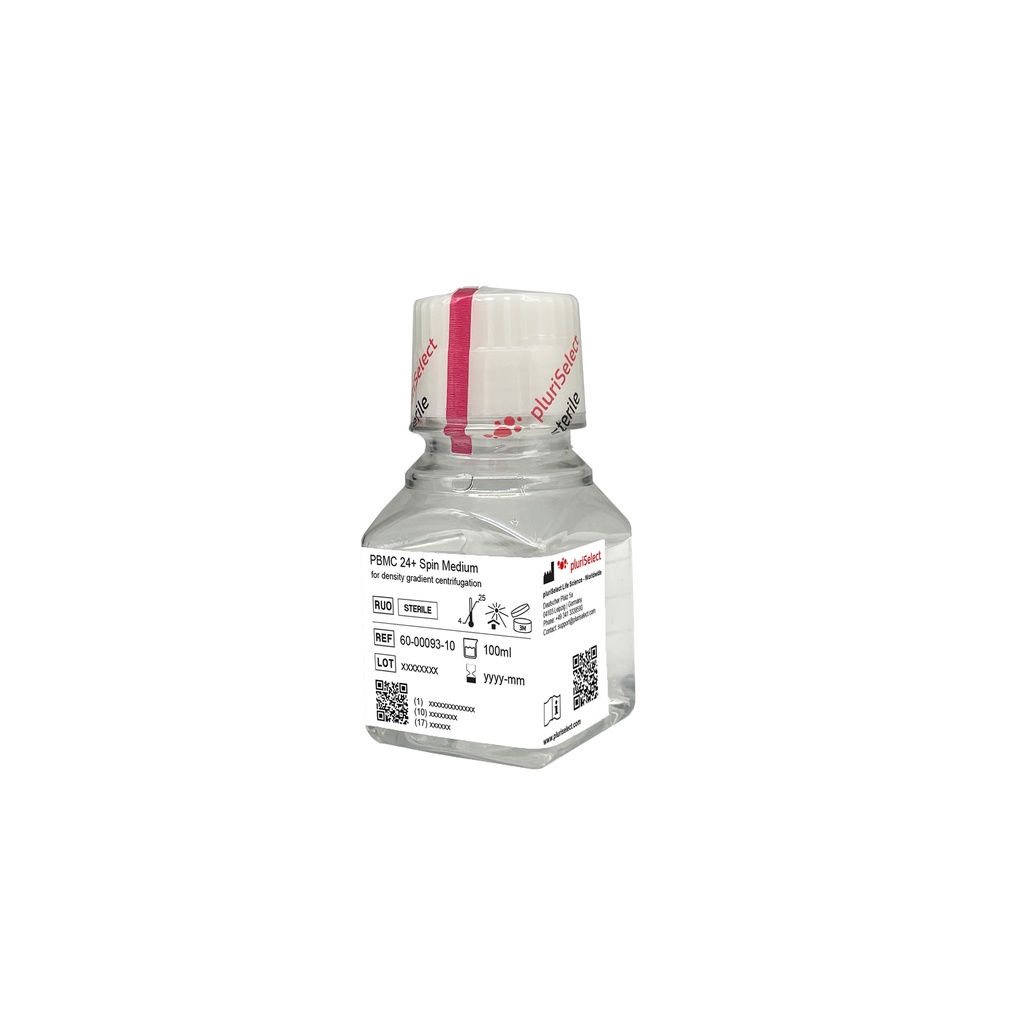Specification
Target cells
Mononuclear cells (lymphocytes, monocytes)
Separation density cut-off
1,077 g/ml
Cell separation method
negative
Sample material
human whole blood, Buffy Coat
Compatible with
pluriMate, SepMate, LeucoSep
Can be used with
pluriSpin, MACS, EasySep, RosetteSep, MojoSort
Features
Access to older sample material
PBMC 24+ Spin Medium enables the enrichment of cells from sample material that is already older than 12 hours.
Ready to use
pluriSelect separation media are ready to use and can be used directly for cell separation.
Compatible
The enriched cells can be used for downstream applications such as MACS, EasySep, RosetteSep or MojoSort .
Combinable
PBMC 24+ Spin Medium can be combined with Leuko 24+ Spin Medium to form a double gradient for the simultaneous enrichment of two cell populations.
Separation scheme
First, the sample material is carefully layered onto the PBMC 24+ spin medium. After the density gradient centrifugation, the upper layer (plasma and dilution buffer) is aspirated. The layer of mononuclear cells is then transferred to a new tube and the enriched cells are washed.
Tip! Use pluriMate tubes.
For overlaying the dense medium, we recommend our pluriMate Röhrchen. The integrated barrier of the pluriMate tube prevents mixing of the two phases (sample material and separation medium) and allows the enriched cells to be poured off after the first centrifugation step. They save time and increase the reproducibility of the results.

BEFORE
Preparation of PBMC with PBMC 24+ Spin Medium. The sample material (1) is carefully placed on the PBMC 24+ Spin Medium (2).

AFTER
Layers after centrifugation. The PBMC (2) are located as a white layer on the PBMC 24+ spin medium (3). Cells with a higher density, such as erythrocytes, granulocytes and dead cells, pass through the medium and are located at the bottom of the tube (4).
pluriSelect, density gradient separation media.
Cell Separation. Simple. Fast. Easy.


